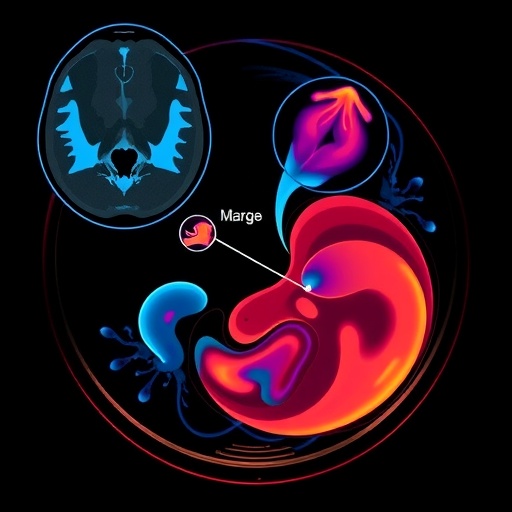Research in the field of maternal-fetal medicine has long sought to understand the dynamic interplay between fetal development and placental health. A recent groundbreaking study conducted by Jacobwitz, Ngwa, Kapse, and colleagues has brought new insights into this complex relationship. The researchers focused on establishing normative reference values and Z-scores for in vivo placental growth as determined by Magnetic Resonance Imaging (MRI). This pivotal research aims not only to enhance our understanding of placental health but also to provide crucial benchmarks for clinical practice.
MRI has emerged as a non-invasive imaging modality that offers detailed insights into the structure and function of the placenta. Traditional methods used to assess placental health have limitations, primarily due to their invasive nature or reliance on unreliable imaging techniques. Jacobwitz and the team harnessed the capabilities of MRI to explore the variability in placental growth across healthy pregnancies. Their findings are set to revolutionize the approach to prenatal care by enabling clinicians to better track and intervene in cases of placental dysfunction.
One of the significant challenges in the field has been the lack of standardized reference values that clinicians can use across different populations. This study addressed this gap by conducting a large-scale analysis of placental MRI data from a diverse cohort. The cohort comprised pregnant individuals with no known complications, allowing the study to establish what is considered typical placental growth during various stages of gestation. By collating this data, the researchers generated the much-needed normative reference values and Z-scores for clinicians to refer to.
The study’s methodology is particularly noteworthy. By employing sophisticated MRI techniques, the researchers were able to capture high-resolution images of the placenta at multiple gestational ages. This approach not only provided valuable data on placental size and morphology but also allowed for analyzing functional aspects, such as blood flow and nutrient transport. Such detailed imaging is crucial for understanding the multifaceted role the placenta plays in supporting fetal development.
One of the standout findings of the research is the substantial variability in placental growth rates, which were significantly influenced by factors such as maternal age, pre-existing health conditions, and geographic location. This variability underscores the importance of personalized medicine in prenatal care. Clinicians may now use the Z-scores developed in this study to assess an individual patient’s placental growth against established norms, enabling more tailored interventions if needed.
Furthermore, the implications of this research extend beyond the academic realm. The reference values and Z-scores serve as a valuable tool for obstetricians, enhancing their ability to monitor pregnancies more accurately. This can lead to timely interventions that may prevent complications associated with abnormal placental growth, such as intrauterine growth restriction (IUGR) or preeclampsia, both of which pose risks to both mother and child.
As prenatal care continues to modernize, the integration of advanced imaging techniques like MRI into routine assessments will become increasingly vital. The results of Jacobwitz et al. signal a trend towards data-driven, evidence-based strategies in pregnancy management. With the establishment of rigorous norms, healthcare providers can mitigate the risks associated with physiological variances in placental function.
Moreover, this study aligns with a broader movement within maternal-fetal health research, which advocates for the incorporation of multidisciplinary approaches to address the complexities of pregnancy. Collaborations among radiologists, obstetricians, and researchers are essential for fostering innovations that improve maternal and neonatal outcomes. Such integrative efforts could lead to the development of scoring systems that predict adverse pregnancy outcomes based on MRI findings.
The future of placental research is bright, thanks to studies like this one, which not only offer immediate clinical applications but also pave the way for future investigations. Understanding the genetic and environmental factors that influence placental health will remain a crucial area of study. Insights garnered from advanced imaging techniques could reveal novel therapeutic targets for improving placental function and ultimately fetal outcomes.
As we move forward, it will be crucial to disseminate these findings widely across the medical community. Educational initiatives aimed at raising awareness about the significance of placental health and its influence on overall pregnancy outcomes are imperative. By ensuring that obstetricians are well-informed about the diagnostic utility of MRI in assessing placental growth, we can hope to see a tangible shift in prenatal care practices.
In conclusion, the work of Jacobwitz, Ngwa, Kapse, and their colleagues represents a significant leap forward in our understanding of placental development during pregnancy. Their findings equip clinicians with essential tools for monitoring placental health and underscore the importance of personalized medicine in this critical area of maternal-fetal health. As future studies build on these groundbreaking results, we anticipate even greater strides toward enhancing pregnancy management and improving outcomes for mothers and their babies.
Subject of Research: In vivo placental growth evaluation using MRI
Article Title: Charting normative reference values and Z-scores for MRI-derived in vivo placental growth
Article References:
Jacobwitz, M., Ngwa, J., Kapse, K. et al. Charting normative reference values and Z-scores for MRI-derived in vivo placental growth.
Pediatr Radiol (2025). https://doi.org/10.1007/s00247-025-06469-y
Image Credits: AI Generated
DOI: 15 November 2025
Keywords: Placental Growth, MRI, Pregnancy Monitoring, Z-scores, Maternal-Fetal Health
Tags: fetal development and placental healthlarge-scale placental analysismaternal-fetal medicine researchMRI in obstetricsMRI placental growth normsnon-invasive imaging techniquesnormative reference values for placentaplacental dysfunction interventionplacental health benchmarksprenatal care advancementsstandardized placental assessment methodsZ-scores for placental growth





